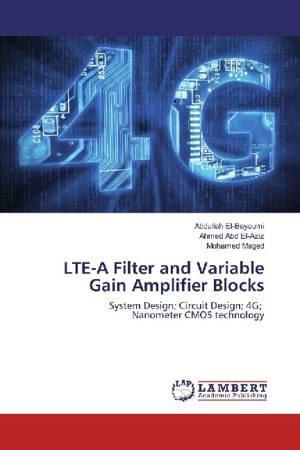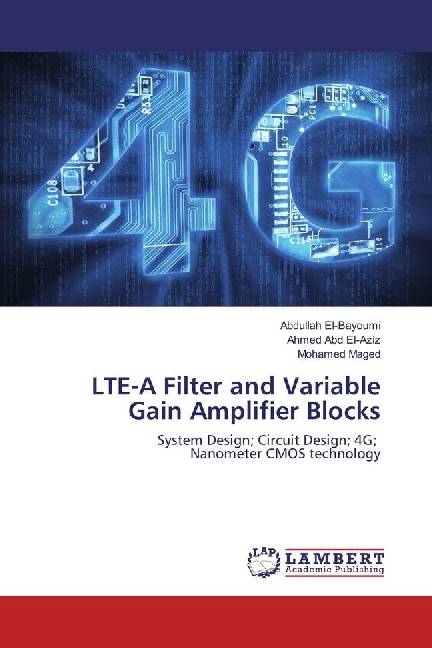
- Afhalen na 1 uur in een winkel met voorraad
- Gratis thuislevering in België vanaf € 30
- Ruim aanbod met 7 miljoen producten
- Afhalen na 1 uur in een winkel met voorraad
- Gratis thuislevering in België vanaf € 30
- Ruim aanbod met 7 miljoen producten
LTE-A Filter and Variable Gain Amplifier Blocks
Abdullah El-Bayoumi, Ahmed Abd El-Aziz, Mohamed Maged
Paperback | Engels
€ 55,45
+ 110 punten
Omschrijving
LTE-Advanced is the evolved version of the LTE developed by 3GPP. It exceeds the International Telecommunication Union (ITU) requirements for the 4G radio communication standard known as IMT-Advanced. LTE-A aims to increase the speed and capacity of wireless data networks. LTE-A has faced a lot of problems such as: (1) noise (Undesired random disturbance of a useful information signal),(2) interference (Two or more waves of the same frequency or wavelength combine to form a wave whose amplitude is the sum of the amplitudes of the interfering waves), and (3) signal variation "Varying voltage of the received signal due to the distance from the source to antenna". In this book, We overcome the stated problems by building, in the LTE-A transceiver, 2 main blocks; Gm-C filters & Variable Gain Amplifier (VGA) by using Cadence/Mentor design tools and with the help of Nmos3v and pmos3v transistors. Filters solve noise and interference problems by selecting the information that will be processed and developed, limiting the received signals and/ or noise bandwidth. The VGA solves signal variation by controlling the input signal and maintains to a proper level for an ADC.
Specificaties
Betrokkenen
- Auteur(s):
- Uitgeverij:
Inhoud
- Aantal bladzijden:
- 152
- Taal:
- Engels
Eigenschappen
- Productcode (EAN):
- 9783330021693
- Uitvoering:
- Paperback
- Afmetingen:
- 150 mm x 220 mm

Alleen bij Standaard Boekhandel
+ 110 punten op je klantenkaart van Standaard Boekhandel
Beoordelingen
We publiceren alleen reviews die voldoen aan de voorwaarden voor reviews. Bekijk onze voorwaarden voor reviews.










